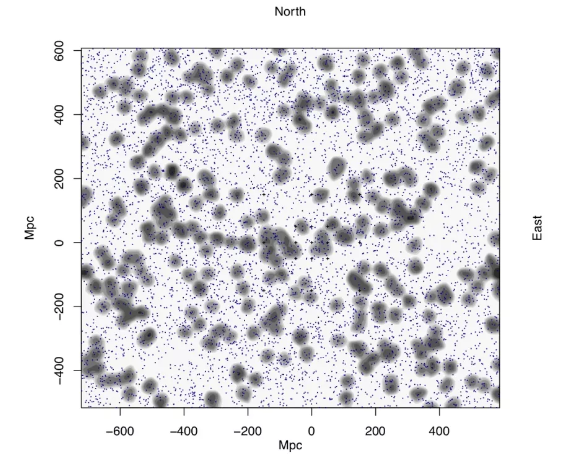‘Giant arc’ stretching 3.3 billion light-years across the cosmos shouldn’t exist.
One of the biggest formations ever seen, a recently discovered crescent of galaxies with a length of 3.3 billion light-years challenges some of astronomers’ core beliefs about the nature of the universe.
Galaxies, galaxy clusters, and a great deal of gas and dust make form the grand arrangement known as the Giant Arc. It occupies nearly one-fifth of the visible universe and is 9.2 billion light-years distant.

According to Alexia Lopez, a cosmology doctorate candidate at the University of Central Lancashire (UCLan) in the UK, its finding was “serendipitous.” Lopez was utilizing light from about 120,000 quasars, which are far-off luminous centres of galaxies where supermassive black holes consume matter and release energy, to map objects in the night sky.
Between us and the quasars, this light travels through matter and is absorbed by various elements, leaving behind telltale signs that can be very useful to researchers. Lopez utilized the markings left by magnesium in particular to calculate the distance to the gas and dust in between as well as the object’s location in the night sky.

According to Lopez, the quasars function in this way, “like spotlights in a dark room, lighting this intervening stuff.” Over the course of the cosmic maps, a structure started to take shape. Lopez said that there was “kind of a suggestion of a vast arc.” I can still picture myself approaching Roger Clowes and saying, “Oh, look at this.”
Her PhD advisor at UCLan, Clowes, recommended more research to make sure it wasn’t an error or a data trick. The researchers conducted two independent statistical analyses and found that there was less than a 0.0003% chance that the Giant Arc was a hoax. At the 238th online meeting of the American Astronomical Society, they presented their research.

But the discovery challenges a fundamental belief about the universe and will rank among the cosmos’ greatest discoveries. The cosmological principle, which states that matter is more or less uniformly dispersed across space at the greatest scales, has been a long-standing tenet of astronomy.
The Sloan Great Wall and the South Pole Wall, both of which are dwarfed by far larger cosmic structures, are smaller than the Giant Arc. Over the years, large-scale structures have been found, according to Clowes, who spoke with Live Science. They seem to defy the cosmological principle because they are so enormous.
It is possible that matter has not been spread equally across the cosmos if such large things have congregated in specific regions of the universe. The cosmological principle, however, is the foundation of the present mainstream model of the cosmos, Lopez continued.
“If we’re finding it not to be true, maybe we need to start looking at a different set of theories or rules.”
Lopez is unaware of the specifics of those hypotheses, but she did bring up the notion of altering gravity’s behavior at the greatest scales, which has recently gained popularity among a vocal but tiny group of scientists.
Daniel Pomarède, a cosmologist at Paris-Saclay University in France and the creator of the South Pole Wall, concurred that the cosmological principle ought to set a theoretical cap on the size of cosmic objects.
Some research has suggested that structures should reach a certain size and then be unable to get larger, Pomarède told Live Science. “Instead, we keep finding these bigger and bigger structures.”
However, he isn’t quite ready to abandon the cosmological principle, which has been included for about a century into universe models.
“It would be very bold to say that it will be replaced by something else,” he said.
Reference: LiveScience
Do not forget to share your opinion with us to provide you with the best posts !




0 Comments